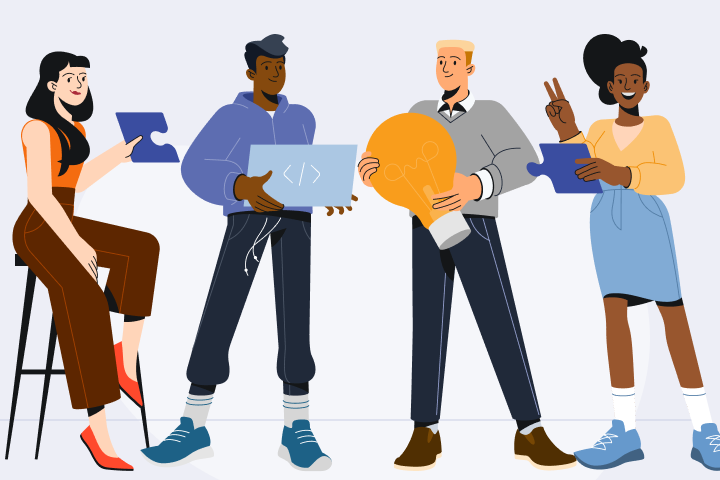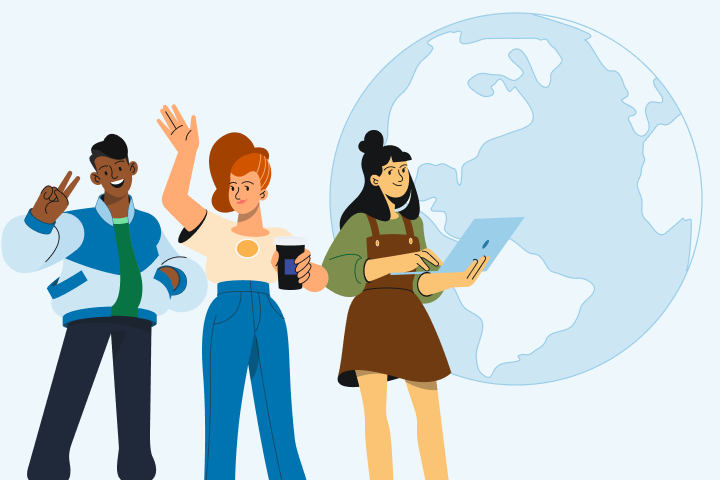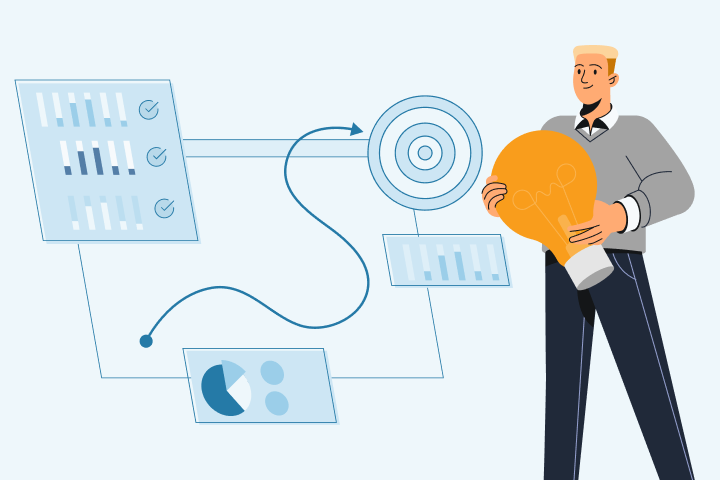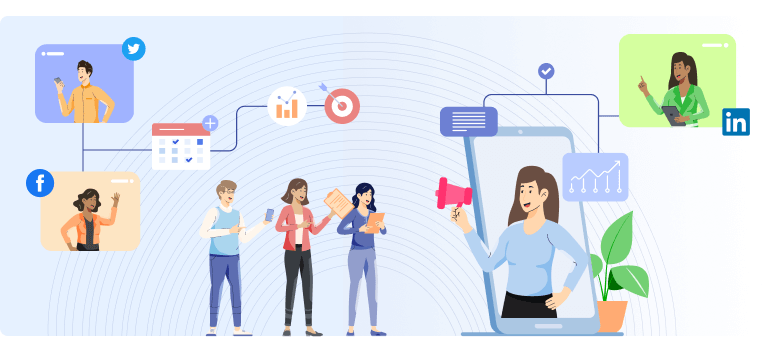When you hear “employer branding,” what pops into your mind? If you’re a brand, you immediately think of how you’re going to attract (and retain) quality employees. But if you’re a prospective hire, partner, or customer you think about what makes a particular brand appealing to work with or purchase from.
For companies who are developing an employee branding strategy, they need to consider all of these perspectives. Here’s why: 95% of marketers say that being perceived as a great place to work has a positive impact on a buyer, while 88% of buyers say that working with great brands is essential.
This means that the reputation of your brand and your employees’ commitment to promoting it is a key deciding factor for success.
To help you develop and promote strong employer branding for your company, we’re explaining the importance of employer branding and sharing tips on how to leverage this strategy effectively along with real-world employer branding campaign examples.
Let’s get started!
Why Is Employer Branding Important
Employer branding is how people view your brand as an employer. It’s a strategy that focuses on developing and promoting a company's identity including its values, culture, and work environment to current and potential employees.
When done correctly, there are three main benefits of employer branding:
1. Attracts and Retains Employees
A strong employer brand is your secret weapon for attracting and retaining top-tier talent. In fact, statistics show:
- 86% of job seekers check company reviews and ratings before deciding where to send their applications.
- 82% of employees weigh the reputation of a company's brand before hitting that 'apply' button.
Clearly, potential candidates aren’t just looking at the position’s salary. They’re also researching the company’s work culture, values, and other benefits.
So, what does this mean for your business? By acing your employer branding, you’re setting yourself up for a cascade of perks. These perks include reduced employee turnover, a quicker and more efficient hiring process, and a distinct edge in the talent market over competitors.
2. Boosts Brand Awareness
Employer branding doesn’t just impact your hiring. It also helps boost your company’s brand awareness. For example, consider Google. When you think of Google, what comes to mind? Perhaps an innovative, work hard, play hard environment. A company with a sleek office environment and enticing perks. It’s a place that you would want to work for, work with, or recommend to your colleagues.
That, right there, is the power of employer branding.
3. Strengthens Employee Advocacy
It’s not just potential employees who care about your employer branding. You can capture more B2C and B2B customers through an employer branding campaign by encouraging employee advocacy.
Employee advocacy is when your existing employees become active spokespeople for your company. They share your content and vouch for the company, increasing your reach considerably.
Stronger employee advocacy leads to a stronger employer brand. In fact, just having an employee advocacy program increases the total social engagement for a brand by 25% to 40%.
These programs benefit existing employees, too. 86% of employees who participated in an employee advocacy program said it positively impacted their careers.
Now that we’ve broken down the importance of employer branding, it’s time to dive into some top employer branding campaign examples and tips.
4 Employer Branding Campaign Examples and Tips
Developing effective employer branding campaigns is both an art and a science. Your employer branding objectives need to authentically represent your company while appealing to the aspirations of potential employees.
Here are four solid employer branding campaigns you can model to help you craft a compelling employer branding campaign of your own.
1. Nike: Leverage Employee Testimonials
Leveraging employee testimonials can be a game-changer for your company's branding, moving beyond just the usual ratings and reviews on third-party sites.
Nike’s employee testimonials are a great example of how to make your brand attractive to potential job seekers. They offer a glimpse into the lives of their employees: why they were drawn to Nike and what "Nike moments" truly feel like from the inside.
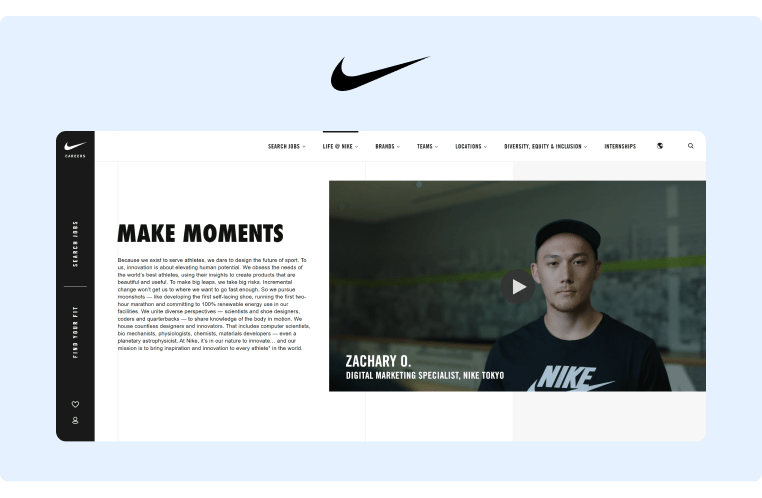
Source: Nike
The videos carefully focus on the company’s core values (innovation, self-improvement, and the transformative power of sports) while still being authentic.
And the icing on the cake? The cinematic editing, powerful quotes, and background score turn these testimonials into extensions of their iconic product ads. It's not just about selling shoes; it's about selling the experience of being a part of the Nike family.
2. Ben & Jerry’s: Showcase What Makes Your Office Unique (Office Perks)
Inviting potential employees to see what work life is like “behind the curtain” is a surefire way to stand out and foster a deeper connection. Even better, share what makes your workspace unique like Ben & Jerry’s does here.
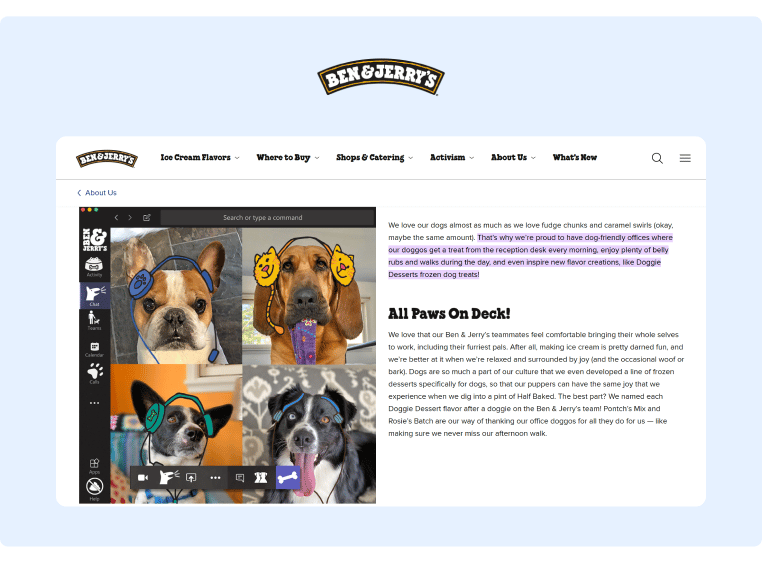
Source: Ben & Jerry’s
One of Ben & Jerry’s perks is they have a pet-friendly office, which they showcase under their ‘About Us’ section. Potential employees (who are dog owners) will love all of the fun perks that Ben & Jerry’s furry teammates receive.
By sharing unique workplace perks (like Ben & Jerry’s), you’re setting your brand apart from the competition and showing why employees work (and will want to work) for your company.
3. Salesforce: Emphasize Your Company’s Culture
Your company’s culture seeps into everything you do. It’s easily one of the most important and organic determiners of your employer brand. How you define and express your company’s values, goals, and vision shapes your culture. It gives potential and existing employees a story to connect with, a guide to act, and a reason to care.
Take the example of Salesforce. They've anchored their community around the "Ohana" philosophy. On their website, Salesforce features a video explaining “What Is Ohana” and how they apply it to their company culture.

Source: Salesforce
Drawing inspiration from Hawaiian traditions, "Ohana" underlines the significance of unity, forming an intentional family that encompasses both employees and clients. By cultivating this ethos as an innate support network, Salesforce is consistently ranked one of the world’s top workplaces.
4. Zappos: Use Employee Advocacy on Social Media
Using employee advocacy to get your employees to share company news, events, and hiring on social media is a great way to increase your brand reach.
Here is a great employer branding social media example. On LinkedIn, a Zappos employee reshares a post about Zappos’ collaboration with Runway of Dreams.
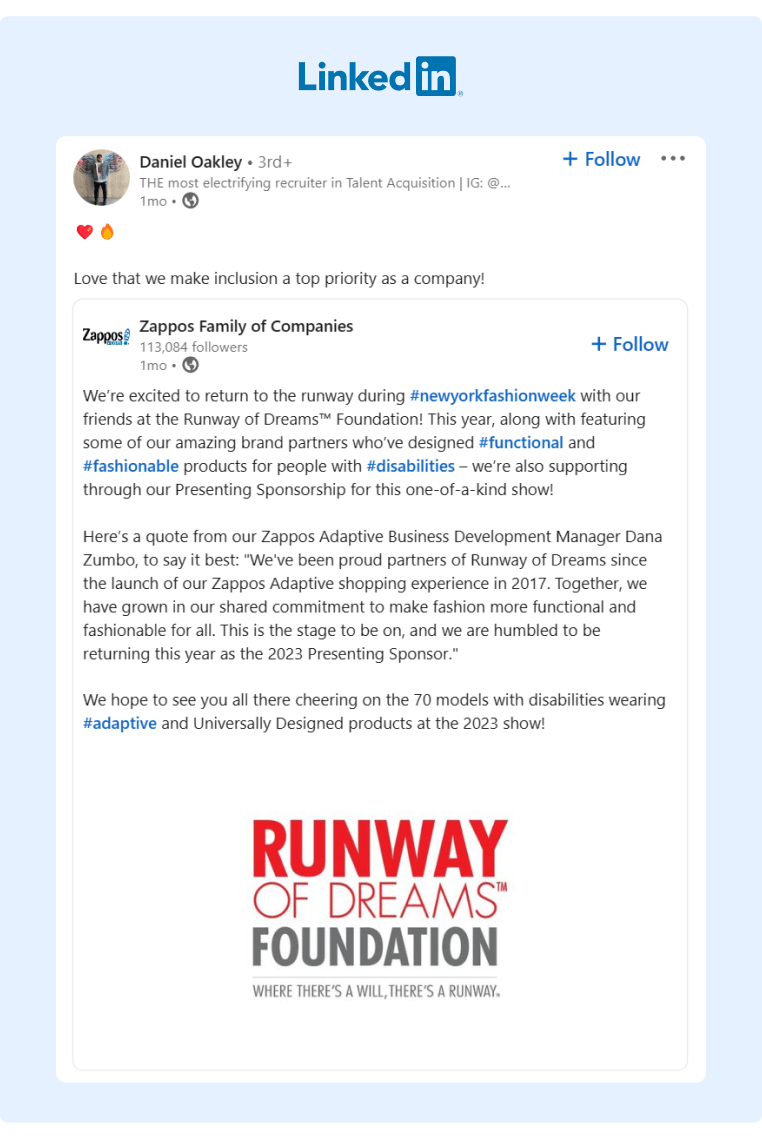
Source: Daniel Oakley
Whether you’re a potential employee or partner, this post highlights a top priority at Zappos (e.g., inclusion). This is valuable information for individuals and companies who value strong brand ethics and morals. Not only has it been shared with the Zappos network, but now it’s being reshared through Zappos’ employees’ network connections, too.
So, take a cue from Zappos and utilize the power of employee advocacy to spread the word about your brand’s collaborations, initiatives, events, and more.
Create an Effective Employer Branding Strategy With GaggleAMP
Every facet of your employer branding campaign crafts a narrative. This story speaks volumes about your brand’s ethos, values, and the premium you place on your most indispensable resource — your team.
By establishing a robust employer brand with strong employer branding campaigns, you're enhancing your public image and building a motivated team eager to be your brand's ambassadors.
And if you’re trying to amplify your brand's voice, GaggleAMP can be a game-changer.
By integrating your employees and stakeholders into your social media marketing strategy, GaggleAMP creates a dynamic ripple effect. No longer are your messages confined to the walls of corporate accounts; they're being amplified by the genuine voices of those who know your brand best.
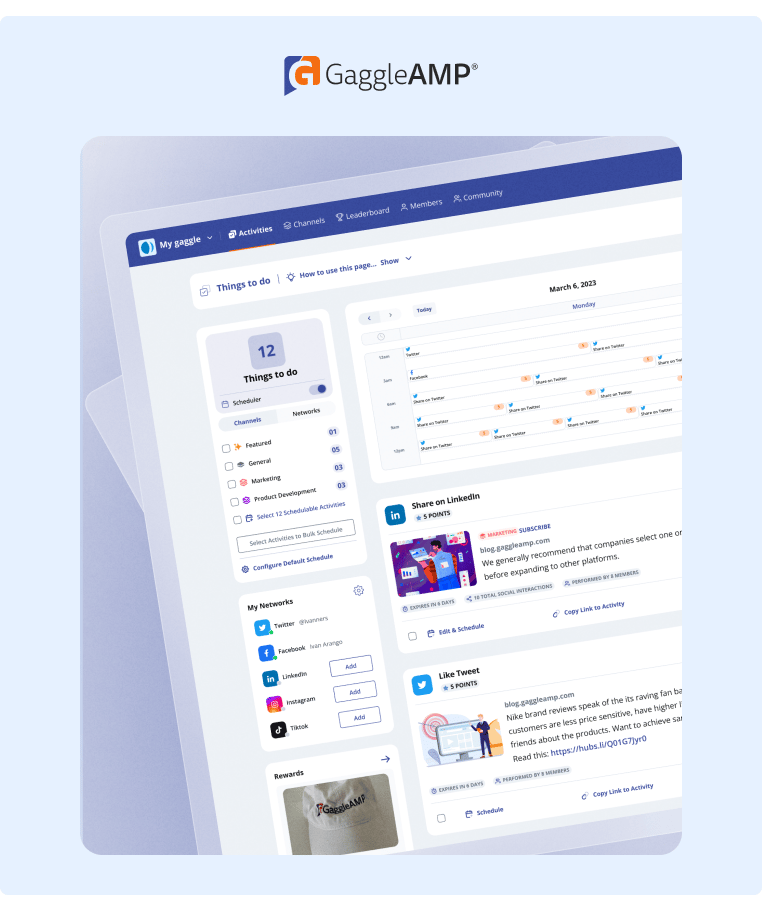
With its user-friendly interface, GaggleAMP allows these brand ambassadors to share, like, and interact with your content seamlessly. This lends authenticity to every post, tweet, or share.
Ready to get started? Schedule a demo today to find out more.




